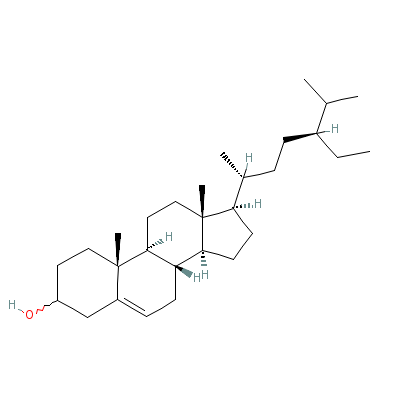| |
|
|
Botanical Name |
: |
Clitoria ternatea L. |
English
Name |
: |
Butterfly Creeper |
Synonym(s) |
: |
Terneata vulgaris H.B.K |
Family |
: |
Fabaceae |
| |
General Info
| Description |
 |
|
It is a perennial climbing herb with slender, terete and downy stems. Leaves are pinnately 3 to 7 foliolate; leaflets are ovate or oblong, obtuse and subcoriaceous. The flowers are showy, blue or white and solitary or axillary. The bracteoles are large and obtuse. Calyx teeth are lanceolate and as long as the tube. Petals are unequal. Style is bearded below the stigma. The pods are linear and compressed. The seeds are 6 to 10, black and smooth. |
| Herb Effects |
 |
|
Acrid, laxative (seed, root and its bark), diuretic (root bark), alexiteric, anthelmintic, purgative, demulcent, tonic, alleviates spasms (root). |
Chemistry
| Active Ingredients |
 |
|
Amino acids (root); anthocyanins (flower); sitosterol and flavonoids (leaf). |
| Chemistry
of Active Ingredients |
 |
|
|
 |
Name |
CAS# |
IUPAC Name |
Formula |
Structure |
 |
|
| Sitosterol |
5779-62-4 |
17-(5-ethyl-6-methyl
-heptan-2-yl)-10,13-
dimethyl-2,3,4,7,8,9
,11,12,14,
15,16,17
-dodecahydro-1H-cycl
openta[a]phenanthren
-3-ol |
C29H50O |

|
|
Pharmacology
| Medicinal Use |
 |
|
To treat oedema, mental disorder, goiter, vitiligo, snake-poisoning, toothache, eye disease, as aphrodisiac, filaria, leprosy (plant juice); dysentery, severe bronchitis, asthma, consumption, ascites and abdominal enlargement. |
| Reference |
 |
|
 Chandel et al., Biodiversity in Medicinal and Aromatic Plants in India. Chandel et al., Biodiversity in Medicinal and Aromatic Plants in India.
Priya Vrat Sharma, Classical Uses of Medicinal Plants.
Terahara N. Toki K. Saito N. Honda T. Matsui T. Osajima Y. Eight new anthocyanins. ternatins C1-C5 and D3 and preternatins A3. |
Dealers
Products
|
|